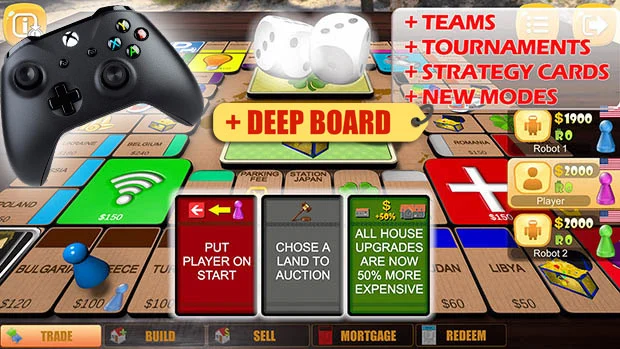ONLINE Backgammon
SCREENSHOTS
DESCRIPTION
Play free Backgammon or play other board games online.
RANKINGS
- TOP PLAYERS
- ACTIVE PLAYERS TODAY
- TOP DAY PLAYERS
- TOP WEEK PLAYERS
- TOP MONTH PLAYERS
RULES OF Backgammon
2 players.
Equipment
- Backgammon board
- 15 checkers for each player (traditionally, one set is tan and the other is brown)
- Two or four 6-sided dice (traditionally, each player is given their own two six-sided dice)
- Optional: a doubling cube
Goal
To be the first player to move all 15 of your checkers from their starting position off the board.
Setup
Choosing the First Player
Each player rolls a single die. The player with the higher roll goes first. (If there is a tie, the players roll again.)
The result of this roll is also used by the first player to make the first move of the game. (Some players prefer to have the first player roll his own dice for the first roll.)
Moving Checkers
On each turn, you first roll both dice. After rolling the dice, you move one or more checkers (if a legal move is available).
The number rolled on each die determines how many points you can move. Your checker can only be moved to an open point. (An open point is one which is not occupied by two or more of your opponent’s checkers).
Each die constitutes a separate move. EXAMPLE: If you roll a 4 and a 1, you can move one checker 4 spaces to an open point and a different checker 1 space to an open point, or you can move one checker 5 spaces to an open point. If you choose to use both dice for a single checker, an intermediate point (in this example, either 4 spaces or 1 space from the starting point) must be open.
You must always use as many of your die rolls as possible, even when doing so is not to your advantage. If only one legal move is available, you must take that move. If either move would be legal, but not both moves, you must use the higher number. If no legal move is available, you lose your turn.
Rolling Doubles
If you roll doubles, you have a total of four moves to make. In other words, if you roll double 5s, you can take four moves of 5 spaces using any combination of checkers (subject to the restrictions under “Moving Checkers” above).
Hitting Your Opponent’s Blot
If a single checker of either color is located on a point, that is known as a blot. If your checker lands on an opponent’s blot, the opponent’s checker is removed from the board and placed on the bar (the wooden area dividing the game board in half). This is known as “hitting” your opponent’s blot.
Checkers on the Bar
If one or more of your checkers is on the bar, your must get those checkers back on the board before moving any others. This is done by moving the checker from the bar to an open point on your opponent’s home board, corresponding to one of the numbers you roll. If both numbers rolled correspond to points which are not open, then you lose your turn.
If you can enter one or more of your checkers from the bar, but not all of them, you must do so. You then lose any remaining moves.
After your last checker has been returned to the board, any remaining numbers on the dice must be played. You may move any checker, including one that was just returned to the board.
Bearing Off
Once all of your checkers are on your home board, you may start bearing off. This is the process by which you remove your checkers from the board.
NOTE: It is important to remember that you cannot bear off any checkers unless all of your checkers are on your home board. EXAMPLE: If one or more of your checkers is on the bar, you cannot bear off any checkers, even if all of your other checkers are on your home board.
You may bear off a checker by rolling the number that corresponds to the point on which that checker resides. EXAMPLE: If you roll a 4, you may remove a checker from the fourth point.
If you roll a number for which there is no checker on the related point, you must make a legal move using a checker on a higher-numbered point. EXAMPLE: If you roll a 3 and all of your checkers are on the fourth point or higher, you must move one of them forward three points. If no such move is possible, you must remove a checker from the highest possible point. EXAMPLE: If you roll a 5 and all of your checkers are on the fourth point or lower, you must remove one them from the board.
You are never required to bear off if another legal move is available.
Doubling Cube
Backgammon can be played as a series of games, with players competing to reach a certain number of points to win. Once you learn how, it is easy to use a Backgammon doubling cube.
Winning
The first player to move all 15 checkers from their starting position to off the board wins the game.



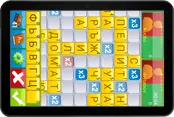





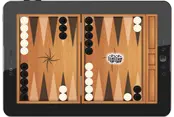
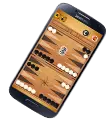
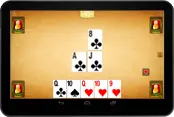
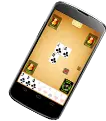



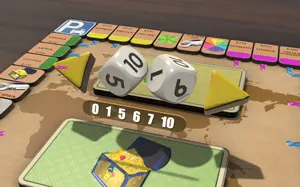 II. DICE CONFIGURATOR
II. DICE CONFIGURATOR